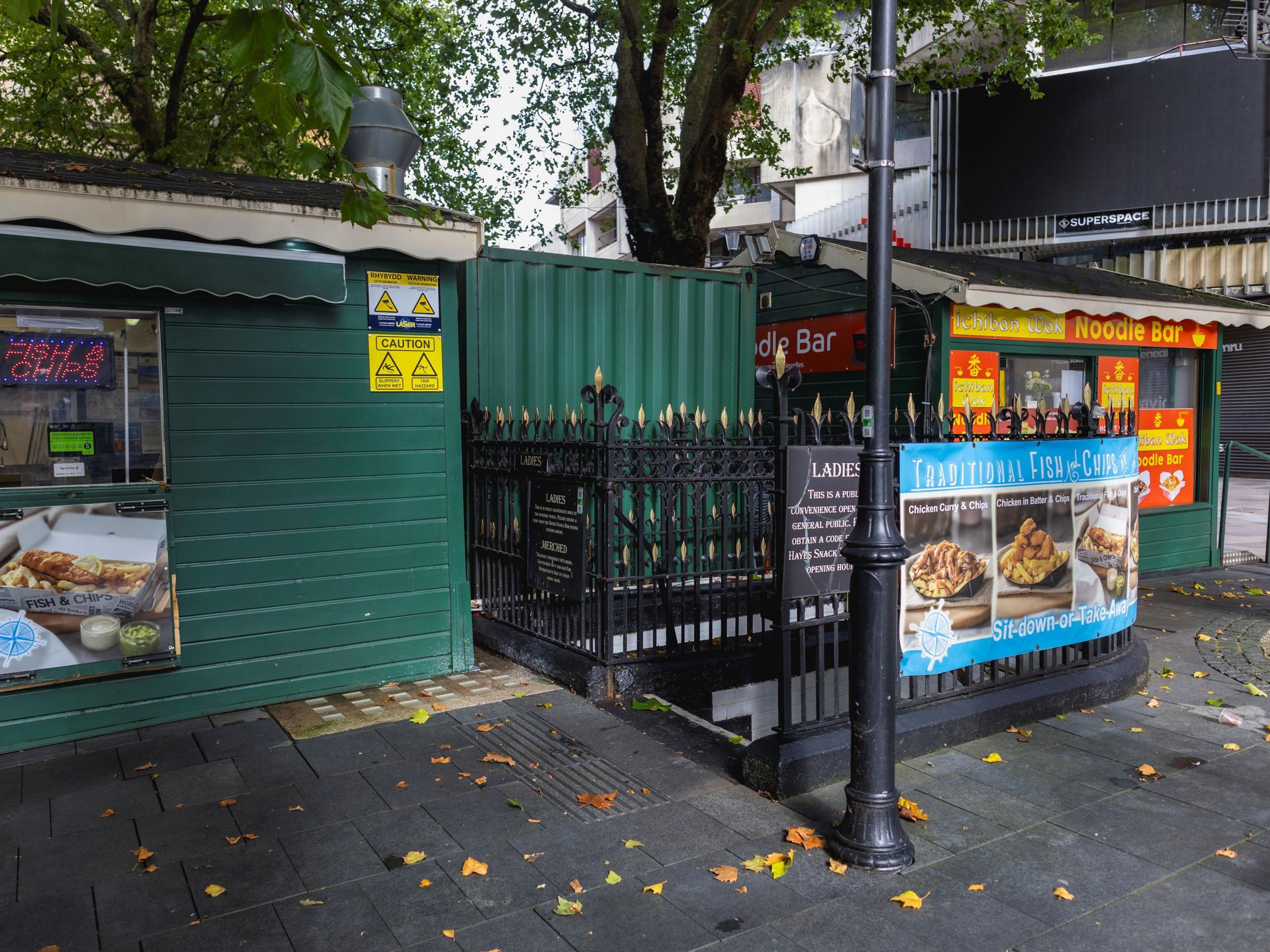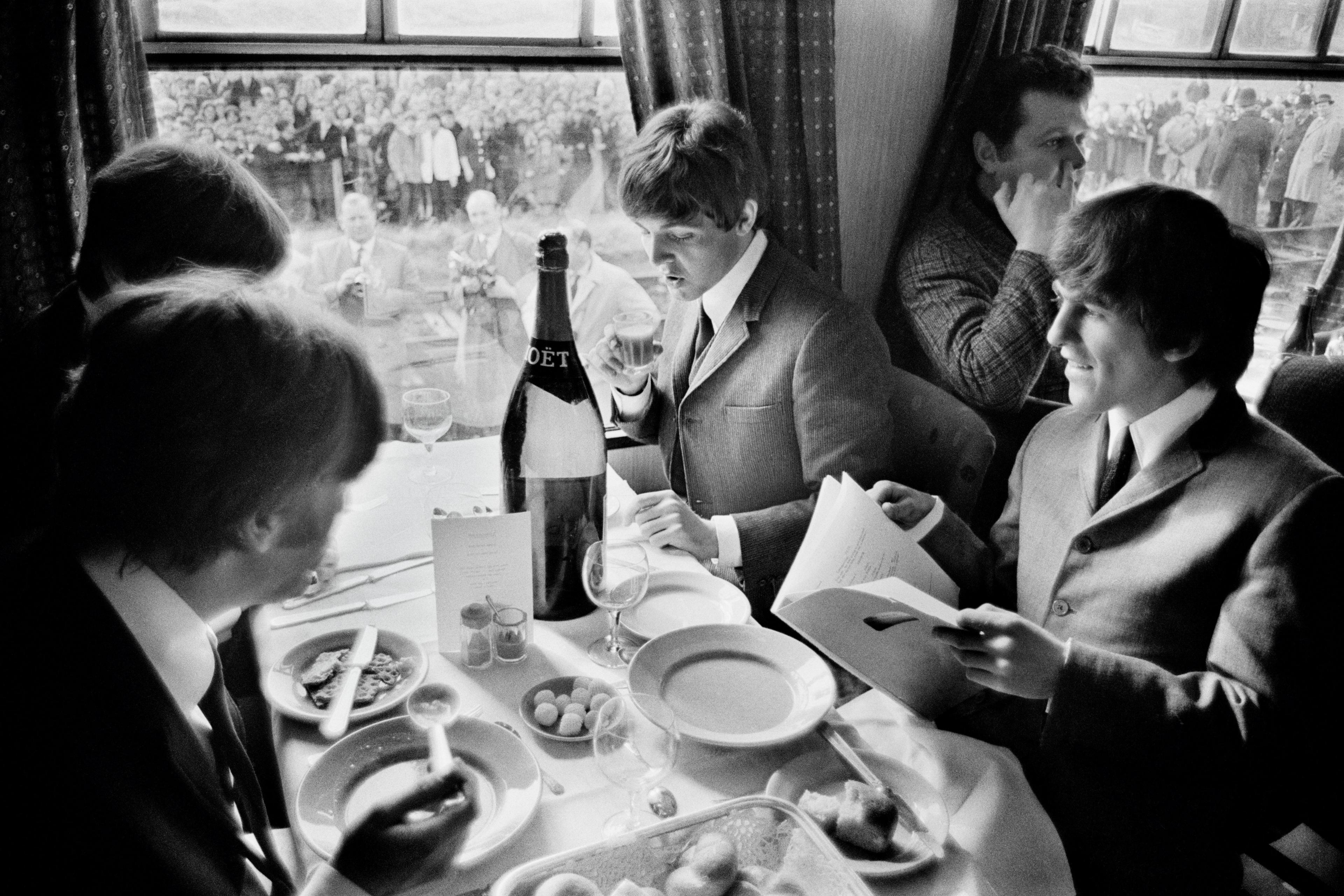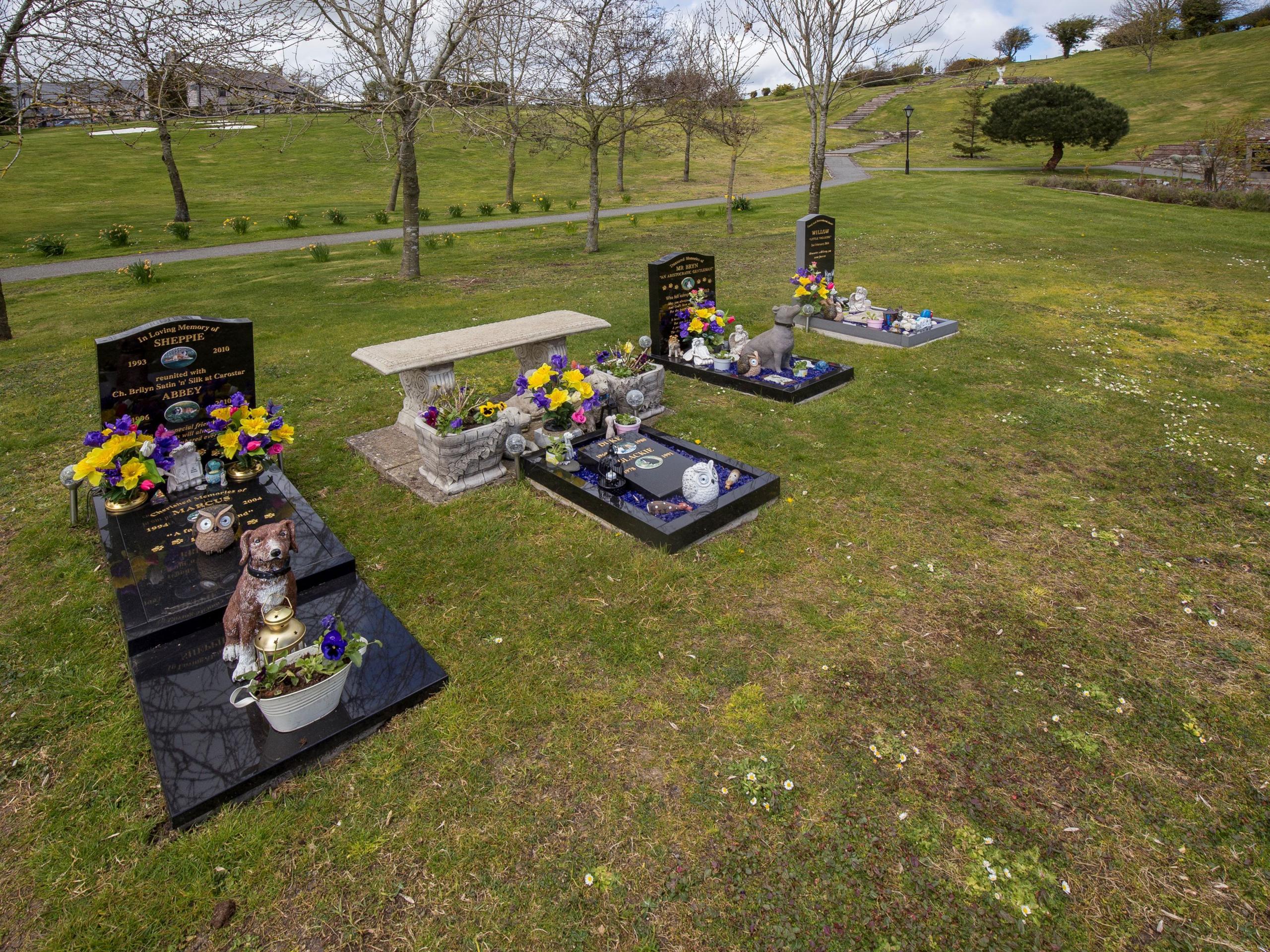Photographer turns lens on unheralded parts of Wales

David Hurn has created an unflinchingly unsentimental portrayal of Wales
- Published
David Hurn is routinely described as Wales' most important living photographer - but he's not a fan of overstatement.
"I'm a photographer, it's like being a plumber - it's no better than, it's less useful than," he says from his cottage in Tintern, Monmouthshire.
Over the past seven decades the 90-year-old has documented everything from the Aberfan disaster to The Beatles at the height of Beatlemania.
For his latest project David, who made his name photographing people, has turned to something different - the Welsh landscape.
Anyone expecting quintessential images of Wales' rugged mountains and dramatic coastlines would be mistaken.

David photographed this public toilet in Cardiff which was shut by the council in 2013
Instead his book takes in some of the country's lesser-celebrated sites, including graveyards, council estates and even a public toilet.
"I wasn't the least bit interested in romantic sort of postcards, people do that for a living and they do it incredibly well so don't compete with someone who does something better than you do," said David.
Instead he set about allowing various experts to suggest what he should photograph when it came to exploring the human effect on the landscape.
The result - Wales As Is - is an unflinchingly unsentimental portrayal of Wales.

David took this picture at the Maesgeirchen estate in Bangor, Gwynedd, which was built as part of Prime Minister David Lloyd George's "home for heroes" programme
Author Richard King, who David invited to write an essay to accompany his photographs, said he found the images refreshing.
He said searching for Welsh identity in the landscape seemed to be "a national hobby and a national obsession".
"The thing that really struck me is how much we want to impose a narrative on these places," he said.
David said he wanted his photographs to explore what people in Wales meant when they said "this is my culture".
"Because whenever I asked them what they meant by the word they got all defensive which means they don't know what they're talking about," he laughed.
"I wish that people who wanted to talk about culture were cultured, it's not asking a lot."

Author Richard King (right) has written an essay about Welsh identity and landscapes which is featured David's latest book
Richard and David first met when Richard interviewed David about his experience of photographing the Aberfan disaster for one of his books.
On 21 October 1966, David was one of the first photographers on the scene when a colliery spoil tip collapsed onto a school killing 116 children and 28 adults.
It is an experience that has remained with him all his life.
"It was undoubtedly the most difficult thing I've ever had to do and that is because you can't think of anything more obscene than children being suffocated with slurry off a tip," he said.

David was one of the first photographers on the scene of the Aberfan disaster in 1966
It was made all the harder because he understood that the parents and miners desperately digging children out of the slurry did not want to be photographed - but it was also imperative he did so.
"That's very difficult to deal with, very difficult and in this case we're talking children which makes it even more difficult," said David.
"It was obvious they saw you as voyeurs but you as a photographer, as a journalist, realised you had to be there because this was an important thing that needed to be documented and you didn't want it to be pushed under the carpet. One of the ways to stop things being pushed under the carpet is to document them and publish them."

In 1964, at the height of Beatlemania, David spent about seven weeks photographing the band while they filmed A Hard Day's Night
Alongside his documentary photography, David made a name for himself photographing stars such as Audrey Hepburn, Jane Fonda, Michael Caine, Sophia Loren and The Beatles.
He also shot five covers for fashion magazine Harper's Bazaar.
Photographer's images expose mum's dementia agony
- Published6 January 2024
Dreamlike Wales inspires Egyptian photographer
- Published29 September 2024
The photos capturing life on margins of society
- Published29 June 2024
"Of course all these things pay a lot of money. It's the trivial that pays a lot of money and what you try to do seriously pays the least," he said.
"To go to the Canary Islands with 11 models in the '60s was nothing but fun, I enjoyed doing it but I wasn't the least bit interested in the end result, it's as simple as that."

This bench David pictured is at the centre of Wales, near Devil's Bridge in Ceredigion, according to calculations by the Ordnance Survey
Many people of his age and with a long career behind them may be thinking of slowing down, but not David.
In fact he says work on his next five books is already underway.
"It's difficult because my legs don't want to work and to shoot pictures you have to walk places and that's difficult now I'm at an age where I struggle," he said.
"But I want to do it."

David photographed this pet cemetery near Brynford in Flintshire